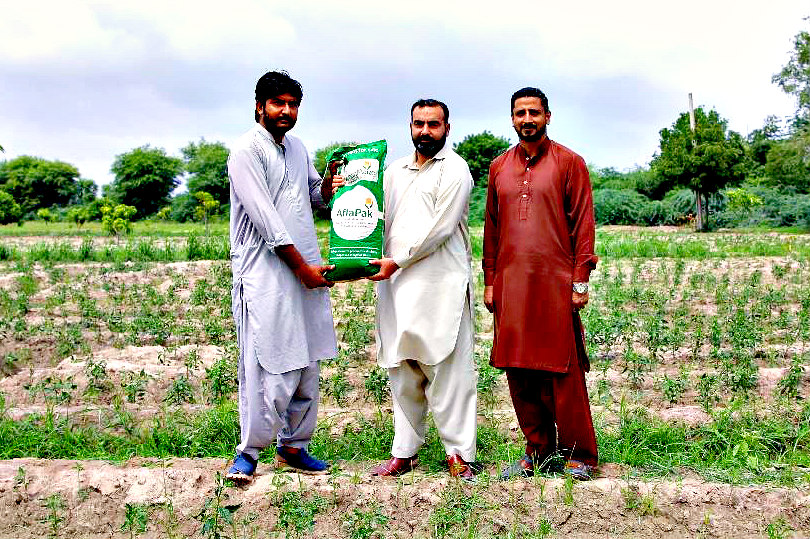CABI Blog
Author: Sabyan Faris Honey
You are here: CABI Blog
Joint efforts towards strengthening harmonization in the pesticide regulatory landscape of the Philippines
May 23, 2025
Sabyan Faris Honey, Saqib Ali
No Comments
CABI together with the United States Department of Agriculture (USDA) and the Fertilizer and Pesticide Authority (FPA) of the Philippines have produced working manuals to help strengthen harmonization of the pesticide landscape in the Philippines. The manuals include guidelines that ensure consistency in reviewing pesticide registration on globally accepted practices based on bio-efficacy and residue…
Key milestone reached in ongoing efforts to enhance regulatory harmonization of pesticides in Philippines
March 19, 2024
Sabyan Faris Honey, Saqib Ali
No Comments
A key milestone has been reached in ongoing efforts to enhance the regulatory harmonization of pesticides to help fight crop pests and diseases as part of an Integrated Pest Management approach to ensuring greater food safety and security. The United States Department of Agriculture (USDA) and CABI, with the support of the Fertilizer and Pesticides…
Revolutionizing crop protection in Pakistan: Registration guidance approved to promote sustainable biopesticides
February 14, 2024
Babar Bajwa, Sabyan Faris Honey
No Comments
To celebrate the longstanding achievement in the crop protection sector of Pakistan, CABI organized a dialogue on ‘Regulatory Harmonization in Pakistan for Maximum Residue Limits and Biopesticides’ in Islamabad, Pakistan. The event saw the approval of biopesticide registration guidance to promote the uptake of safer-to-use and more environmentally friendly biopesticides in the fight against crop…
Partnership committed to strengthening sustainable agriculture and trade in the Philippines
November 16, 2023
Sabyan Faris Honey
No Comments
CABI and CropLife Asia, in partnership with the United States Department of Agriculture – Foreign Agricultural Service (USDA-FAS) co-organized a workshop with the Philippines Fertilizer and Pesticide Authority (FPA), to help strengthen sustainable agriculture and trade in the Philippines.
Biocontrol training in Pakistan helps farmers prevent harmful aflatoxins in chillies
November 9, 2023
Babar Bajwa, Sabyan Faris Honey
1 comment
Pakistan is the world’s fourth-largest producer of chillies. The country accounts for around 4-5% of global chilli production. Sindh province is where 85% of Pakistan’s chillies are grown, making it one of the biggest chilli-producing regions worldwide. The province is well-known for the town of Kunri, home of the world-famous Dundicut red chillies. But here,…
Fostering food safety: Joint cooperation for improving MRLs regulatory system in Vietnam
October 24, 2023
Sabyan Faris Honey
No Comments
Vietnam is a country prominent for its rich history, impressive landscapes, and delectable cuisine. It is not only making headlines for its tourism but also for its collaborative approach to food safety and regulations.
Sowing the seeds of women’s leadership in researching Pakistan’s chilli sector
March 2, 2023
Babar Bajwa, Sabyan Faris Honey
1 comment
Over the past decade, there has been a global shift in the inclusiveness of women in varied fields including all levels of science, technology, engineering and mathematics (STEM) disciplines.
Fields trials on biological control of aflatoxins on red chilies to ensure safer crops
September 28, 2022
Babar Bajwa, Sabyan Faris Honey
No Comments
CABI in Pakistan is leading a project to help provide a biological control solution for combatting aflatoxin issues prevailing in red chillies grown in Sindh, Pakistan.
CABI extends collaboration to mitigate harmful aflatoxins in red chilies
May 16, 2022
Babar Bajwa, Sabyan Faris Honey
No Comments
CABI in Pakistan has joined forces with the Pakistan Agricultural Research Council (PARC) and Ministry of National Food Security and Research (MNFS&R) to further research into a biological control to mitigate aflatoxins in red chilies.
Virtual training workshop on ‘Biopesticides and their Future Prospective for Pakistan’
December 16, 2021
Babar Bajwa, Sabyan Faris Honey
No Comments
CABI’s centre in Pakistan, along with United States Department of Agriculture (USDA) through the financial assistance of United States Agency for International Development (USAID) is currently involved in implementation of a program ‘Regulatory Harmonization in Pakistan for MRLs and Biopesticides’ with the objective to detect and prioritize high-risk pesticides related to increased Maximum Residue Limits…
Subscribe to blog
DISCLAIMER
Views expressed in contributions do not necessarily reflect official CABI positions.
Archives
Categories
- Agriculture and International Development
- Veterinary and Animal Sciences
- Climate change and biodiversity
- Publishing
- Value chains and trade
- Crop health
- Environmental Sciences
- Human Sciences
- Tourism, Hospitality and Leisure
- Food and nutrition security
- Plant Sciences
- Gender and youth
- Digital development
- Development communication and extension
- Economic development
- Invasive species
- CABI Bioservices
- One Health










